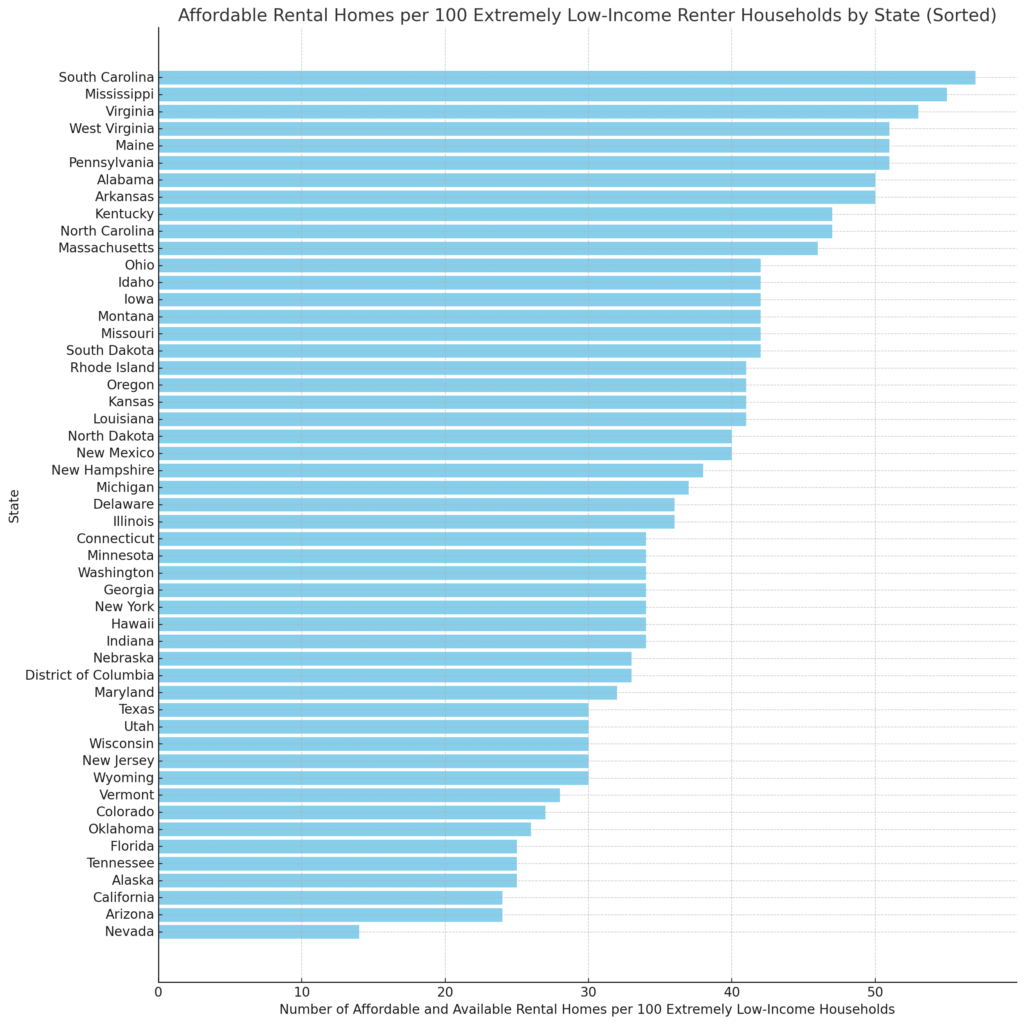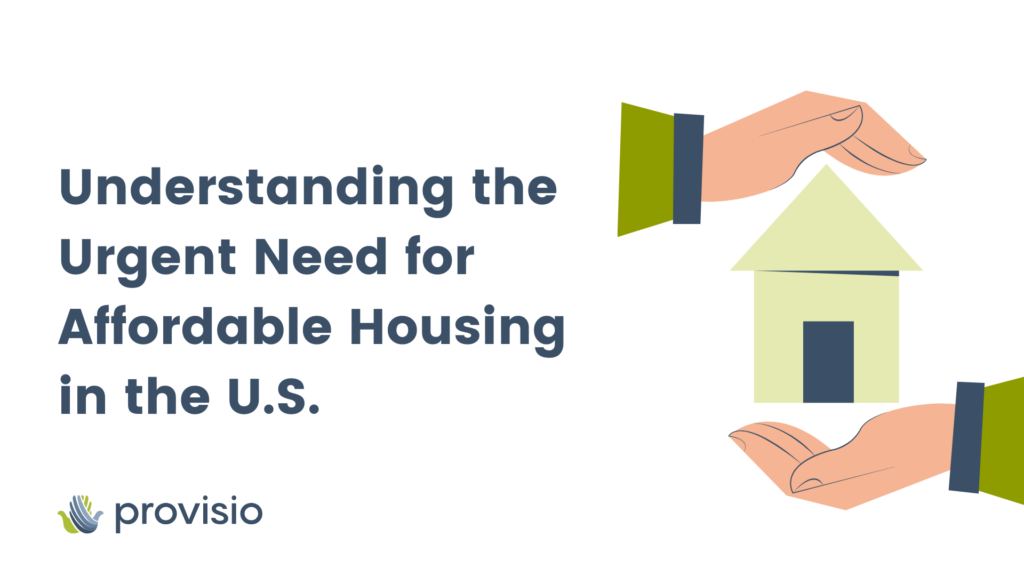“We cannot underwrite what can happen in the future. We already know how we have neglected matters in the past. But I do say that [The Fair Housing Act] can be the Magna Carta to liberate our cities. With it we now have new means to win new rights for every American in every city and on every country road. That new right is the fundamental and the very precious American right to a roof over your head – a decent home.” Lyndon B. Johnson (1)
The Fair Housing Act prohibits discrimination concerning the sale, rental, and financing of housing based on race, religion, national origin, sex, handicap, and family status. The intent of the law was for all people to have equal access to the housing of their choice that they can afford. However, as most human services organizations know, we have a shortage of affordable housing in this country.
So what happens when the intent of the law doesn’t match the practical realities of our current housing systems? Where are we now? And how do we move forward?
The United States Needs More Affordable Housing
The National Low Income Housing Coalition reports that not a single state has an adequate amount of affordable housing for the lowest-income renters.
- Extremely low-income renters in the U.S. face a shortage of 7.3 million affordable and available rental homes, resulting in only 34 affordable and available homes for every 100 extremely low-income renter households.
- The shortage of affordable rental housing is greater than it was before the pandemic. Between 2019 and 2022, the shortage of affordable and available rental homes for extremely low-income renters increased by over 480,000.
- Black, Latino, and Indigenous households are disproportionately extremely low-income renters and disproportionately impacted by this shortage. (2)
The chart below illustrates the number of affordable and available rental homes per 100 extremely low-income renter households in each state, emphasizing the nationwide scope of this issue and the need for affordable housing solutions. (2),(3)

A Complex Issue: How Affordable Housing Gets Built
If you’d like to dig into the complexity of building affordable housing, Urban Institute developed a tool for putting yourself in the role of a housing developer. You can manipulate the values of rent, vacancy rates, and various expenses to see if it’s possible to close the gap between what building costs are compared to what people can afford to pay in rent.
The bottom line: without the help of government subsidies and grants, building affordable housing is almost impossible.
The main source of development funding is the Low-Income Housing Tax Credit (LIHTC), a federal tax credit administered by state agencies. Most affordable housing that gets built receives these tax credits.
Developers often rely on numerous funding sources, sometimes up to 29, beyond a mortgage loan and LIHTC tax credit to build affordable housing. It’s crucial for governments to coordinate grants effectively and ensure sufficient subsidy funds to overcome financing obstacles and support development. (4)
Better Grants Management is Essential
With up to 29 various funding sources, just keeping track of who gave what is difficult. On top of that, the administrative costs for grant management spiked in 2020, increasing by half at the federal level. REI Systems, George Washington University, and the National Grants Management Association presented the results from their annual grants management survey.
In the survey, federal respondents indicated that their organization’s administrative budget made up 15% of the value of grants disbursed, up from 10% in 2019. State-level grant managers reported an increase from 11% to 13%, while non-governmental organizations reported an increase from 9% to 10%. (5)
The survey results showed that grant managers spend much of their time on financial compliance and reporting. Their conclusion? Streamlining business processes and utilizing technology that automates data entry and data sharing will help reduce time spent on administration. (5)
How Can Tech Support the Larger Solution
Salesforce for Grants Management can support nonprofits and public sector agencies in managing a large number of funding mechanisms. Organizations can track tax credits, forgivable loans, and (for buyers) down payment assistance. If they track property data, they can tie subsidies to that and have insight into relevant information like payoff balances and equity share. Grant budgets and spending can be managed down to a line-item detail level.
Provisio hosted a webinar about using Salesforce for grants management, highlighting its ease of use, audit functionality, and reporting capabilities. View the recording here.
Clearing a Path for Housing Stability
Eden Stiffman notes in The Chronicle of Philanthropy that we need to address the connections between income and housing, push for housing-friendly policies, and help the public understand why many people can’t afford homes. She quotes Susan Thomas, president of the Melville Charitable Trust, which focuses its grant-making on preventing and ending homelessness.
“People need a place to live in an area that’s decent, has access to opportunities, and allows them to thrive. It’s as simple as that.” (6)
Efficient grants management is crucial for transforming the legislative intent of past generations into tangible benefits for our communities today. Through the implementation of technical solutions to streamline administrative processes, enhance transparency, and foster collaboration, housing leaders can clear a path to the housing stability that many in our communities desperately need and deserve.
Resources /Links
- The American Presidency Project. “Remarks Upon Signing the Housing and Urban Development Act of 1968” https://www.presidency.ucsb.edu/documents/remarks-upon-signing-the-housing-and-urban-development-act-1968
- National Low Income Housing Coalition. “The Gap: A Shortage of Affordable Homes,” March 2024. https://nlihc.org/gap
- United States Census Bureau. “Nearly Half of Renter Households are Cost -Burderned , Proportions Differ by Race,” September 12, 2024 https://www.census.gov/newsroom/press-releases/2024/renter-households-cost-burdened-race.html
- Urban Institute.”The Cost of Affordable Housing: Does It Pencil Out?” https://www.urban.org/urban-wire/how-affordable-housing-gets-built
- Government Executive. “How the Pandemic Has Impacted Grants Management” https://www.govexec.com/management/2021/03/how-pandemic-has-impacted-grants-management/172703/
- Eden Stiffman. “Grant Makers Support Affordable Housing to Further Many Other Causes, The Chronicle of Philanthropy https://www.philanthropy.com/article/grant-makers-support-affordable-housing-to-further-many-other-causes

Marjorie lives in Saint Louis, Missouri. She received her Master’s degree in English from Truman State University. Her responsibilities at Provisio Partners include content creation and technical writing.

